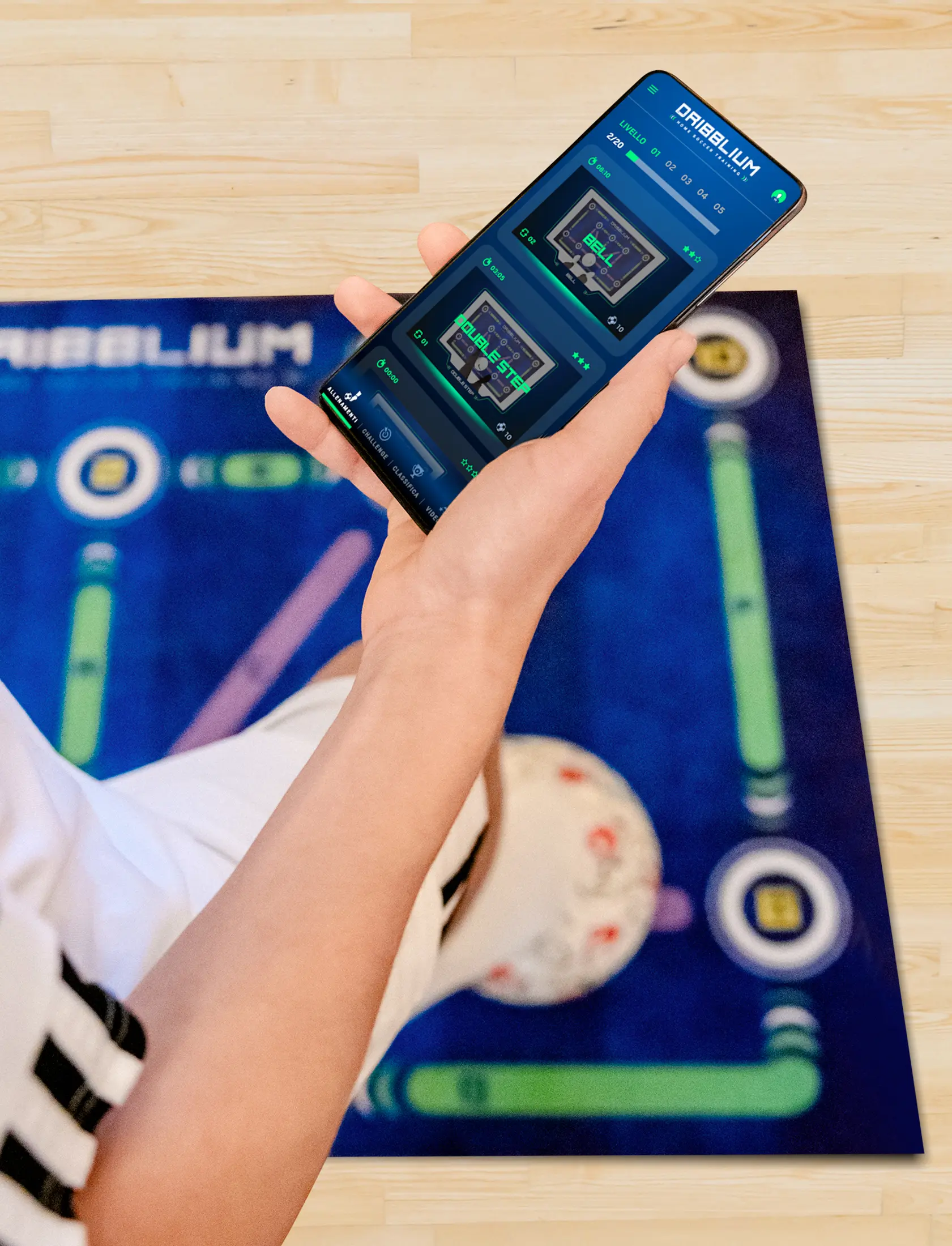Youth soccer represents a key component for the future of the sport. The discovery and training of young talent are crucial activities that require specific skills, passion and meticulous attention. In this context, talent scouts, or soccer observers, play an essential role in identifying and developing the promise of the future. This article will explore the importance of scouting in youth soccer, outlining the main responsibilities of scouts and introducing Dribblium, an innovative tool for coaching young soccer players.
The Role of Scouts in Youth Football
What Does a Talent Scout Do
A scout in youth soccer is tasked with identifying promising young players, evaluating their technical, tactical, and physical abilities. Scouts spend countless hours attending games, tournaments, and training sessions, trying to identify those players who show above-average potential. But what distinguishes a good scout from an average one? The answer lies in the ability to see beyond a young player’s current abilities, envisioning his future development and predicting how he might evolve over time, adapting to the new dynamics of the game and the needs of the team. A good scout possesses an experienced eye and a long-term strategic vision. In addition to these skills, the ability to communicate effectively with coaches, players, and managers is critical to ensuring that identified talent can be developed to its full potential. Meticulous observation and the ability to make accurate predictions are essential to success in this role.
Soccer Scouting: Technical and Tactical Skills
Soccer scouts evaluate a range of technical skills, such as ball control, dribbling, passing and shooting. However, technical skills are not the only determining factor. Tactical understanding of the game is equally crucial. A good player must be able to read game situations, make quick decisions, and adapt to different dynamics on the field. Observers carefully analyze these aspects, looking to see if a young player has the “sense of the game” needed to excel at the highest levels. They also assess the player’s ability to work in synergy with teammates, his game vision, and football intelligence, which can positively influence collective performance. The ability to execute movements without the ball and create space for teammates is also an indicator of superior tactical intelligence.
Physical and Mental Skills
In addition to technical and tactical skills, scouts also consider the physical and mental qualities of players. Speed, stamina, strength and agility are all key. However, mental attitude is equally important. Determination, resilience, the ability to work as a team, and a winning mentality are qualities that can make the difference between a good player and a champion. Observers try to identify these character traits in young players, assessing how they react to challenges and pressures. They also analyze concentration skills, stress management and emotional maturity, which are essential elements for professional and personal growth. They also examine leadership, the ability to motivate teammates, and attitudes toward training and continuous improvement. The ability to recover quickly from injuries and maintain a positive attitude even in difficult times is another sign of mental maturity.

The Importance of Scouting in Youth Football
Discovering New Talents
Scouting in youth soccer is crucial to discovering new talent and ensuring generational turnover in professional teams. Without an effective scouting system, many young talents may go unnoticed, missing the opportunity to develop their skills and reach their full potential. Youth soccer scouts
Creating the Foundations for the Future
Early discovery of talent allows clubs to invest in their development, creating the foundation for the team’s future. Investing in youth not only allows for a competitive team in the years to come, but also builds a solid and recognizable club identity. Young talents discovered and trained within a club can become symbols and ambassadors, conveying the club’s values and culture. In addition, training promising young players allows clubs to maintain a consistent level of performance, avoiding periods of crisis related to a lack of new talent. A strong nursery can also attract sponsors and supporters, increasing the resources available for further investment in the youth sector.
Reducing Procurement Costs
An effective scouting system allows clubs to reduce the cost of buying established players. Identifying and developing young talent in-house is often cheaper than buying players from the market. In addition, players raised in the nursery have a strong sense of belonging to the club, which can translate into greater loyalty and dedication. This approach not only reduces costs, but also creates a more cohesive team environment where players feel they are part of a soccer family, thus fostering greater commitment and better team chemistry. In addition, internally raised talent can often have a greater and more lasting impact than externally purchased players.
The Scouting Process: From Discovery to Development
Talent Identification
The first step in the scouting process is the identification of talent. Youth soccer scouts participate in local games, tournaments, and school leagues, observing thousands of young players. This requires a well-organized and collaborative scouting network that can cover wide geographic areas and identify top talent. Collaboration between scouts and local coaches is essential to obtain reliable reports and to constantly monitor the progress of young athletes, thus ensuring accurate and informed selection. In addition, it is important for scouts to stay abreast of new trends in the game and developments in coaching methodologies to better identify emerging talent.
Evaluation and Selection
After identification, scouts evaluate players through standardized criteria. These criteria include, as we have seen, technical, tactical, physical, and mental skills. Each player is observed several times to ensure that his performance is not random, but represents his true potential. This stage requires a keen eye and a thorough understanding of the game, as even small details can indicate the presence of exceptional talent. In addition, scouts often use technological tools and video analysis to support their assessments and make more accurate decisions. Constant communication with coaches is crucial to ensure that selected players can integrate effectively into the club’s development programs.
Development and Training
Once selected, young talents enter club training programs. Here they receive high-quality soccer education focused on developing their technical, tactical and physical skills. Training programs are tailored to meet the individual needs of each player, helping them overcome their weaknesses and maximize their strengths. This stage is crucial to transforming raw talent into a complete player, ready to take on the challenges of professional soccer. Coaches work closely with players, providing ongoing feedback and psychological support to ensure balanced and sustainable growth. In addition, programs include educational and life aspects off the field, preparing players for a successful career both on and off the field.
How to Get Noticed by Talent Scouts: Preparation Strategies
Preparing to be discovered by a scout requires a methodical and disciplined approach. First of all, it is essential to constantly work on improving one’s technical, tactical and physical skills. Participating in intensive training sessions, following customized programs that aim to enhance areas of weakness and consolidate strengths, is crucial. Using advanced tools such as
Participating in tournaments, school leagues, and other local competitions increases visibility and chances of being noticed. Recording and analyzing your games allows you to identify areas for improvement and present a solid portfolio to scouts.
Mental preparation is equally important. Demonstrating resilience, determination, and a strong work ethic can make all the difference. In addition, maintaining a professional demeanor both on and off the field is critical. Building a network of contacts with coaches, players, and other industry professionals can open up important opportunities. The combination of technical, mental, and strategic preparation is the key to standing out and impressing youth soccer observers.
Dribblium: An Innovation in the Training of Young Football Players.
How does Dribblium work?
Dribblium is an innovative exergame designed to help young soccer players improve ball control and dribbling techniques. The program offers more than 100 distinct exercises, organized into five levels of difficulty, which are unlocked by completing exercises from the previous level.
These exercises are led by experienced coaches and must be replicated on the “training map,” a rectangular mat that simulates a piece of the playing field directly in the user’s home. At the end of each video lesson, players can self-assess their execution of the technique and decide whether to repeat the exercise. Each completed session includes a detailed report with the player’s self-assessment, number of repetitions, date of last execution, and time spent on the exercise, thus providing a complete overview of progress.
Benefits of Dribblium for Scouting
Dribblium not only improves the training of young soccer players, but also provides a valuable tool for youth soccer observers through challenges.
Challenges are video challenges in which young players demonstrate their skills by replicating the proposed exercise with as much intensity and speed as possible in a predetermined time frame. The greater the number of repetitions performed in the given time window, the higher one climbs in the ranking of that challenge. The video made for the challenge becomes part of the player’s video CV library on the webapp, visible to the community and scouts.
Participating in many challenges and filming your own training sessions increases your chances of being noticed by professional scouts and clubs. Upon completion of the levels, it will be possible to obtain the TABS (Technique, Aptitude, Balance, Speed) scorecard and receive invitations to attend in-person tryouts at professional teams, provided that the characteristics described in the TABS match the requirements sought by the club. This system not only incentivizes continuous improvement, but also provides a concrete platform to showcase one’s skills and attract the attention of soccer professionals.

Conclusion
Youth soccer scouts play a crucial role in the discovery and development of future talent. Their work requires specific skills, dedication and a deep understanding of the game. Innovative tools such as Dribblium are transforming the training of young soccer players, providing accurate data and personalizing development programs.
Faq
What does a scout do in youth soccer?
A scout in youth soccer identifies promising young people, assessing technical, tactical, physical, and mental abilities by observing matches and training sessions.
What skills do soccer scouts assess?
Soccer scouts assess ball control, dribbling, passing, shooting, speed, stamina, strength, agility, tactical understanding, quick decisions and adaptability.
Why is scouting important in youth soccer?
Scouting in youth soccer is crucial for discovering talent, ensuring generational turnover, and building competitive and sustainable teams.
How can Dribblium improve the training of young soccer players?
Dribblium improves training by analyzing real-time data and providing personalized feedback to optimize the performance of young soccer players.
What are the advantages of Dribblium for scouting?
Dribblium provides detailed objective data, reduces evaluation errors, optimizes scouting decisions, and improves talent identification.
Can Dribblium be used to monitor long-term progress?
Yes, Dribblium provides continuous data that allows you to monitor and adapt your training over time.
How does one become a football observer?
To become a soccer observer, one can take specific training courses, obtain certifications and gain practical experience observing matches.







